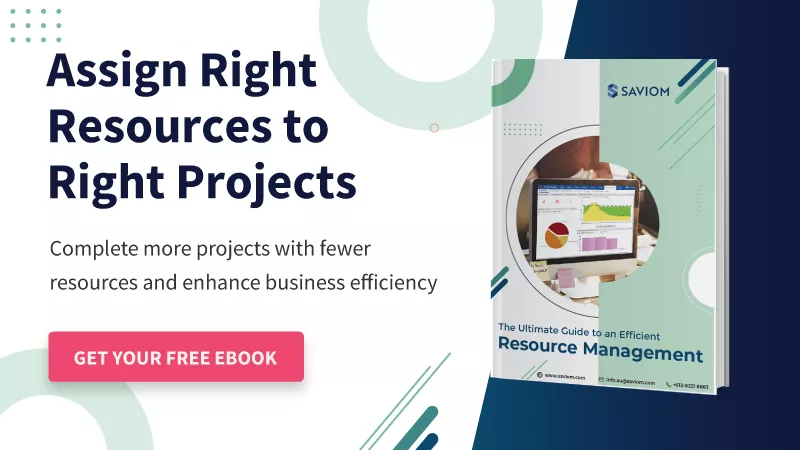Performance management is an important activity within any organization conducted annually to evaluate each employee’s accomplishments during the year. It directly implies employee compensation, including but not limited to salary adjustment, promotion, rewards & recognition, etc. Although it’s an annual phenomenon, many organizations also conduct periodic reviews on employee performance so that timely feedback can be given to them.
This article explores the employee performance management process, factors that influence it, its types, and benefits in detail.
Before delivering deep, let’s begin with the fundamentals.
What is Employee Performance Management?
Employee performance management is a dynamic and strategic approach to sustain a high-performance culture within an organization. Its goal is to bring out the best in every employee and align it with the organization’s long-term vision and mission.
It’s important to note that there are no fixed performance appraisal criteria. They can differ from one company to another based on their organizational guidelines and culture. However, certain attributes remain common and are followed by every firm. Some examples are behavioral traits, skill & competency level, efficiency, willingness to learn, etc.
Furthermore, a company can set different sets of performance appraisal criteria for different hierarchical levels. For instance, the performance appraisal criteria for an SEO executive can be different from those for a digital marketing head. The management team also can have entirely different performance management criteria.
Other components in varied forms that constitute performance management are individual development plans, feedback, performance reviews, and additional roles & responsibilities.
Factors that Influence Employee Performance
Several factors influence employee performance. A few common determinants are as follows.
- Level of employee satisfaction and engagement
- Work culture
- Rewards & Recognition
- Opportunity to learn new skills
- Knowledge of the company’s objectives and expectations from the employee
- Training and upskilling strategies
- Degree of products’ understanding by the employee
- Work allocation based on the employee’s skills
The following section walks you through the differences between an annual appraisal and a continuous appraisal.
Annual Performance Appraisal vs. Continuous Performance Appraisal
The primary difference between annual performance appraisal and continuous performance appraisal is evident from their names.
“Annual performance appraisal is a traditional approach that involves a formal review of an employee’s progress once a year. On the contrary, continuous performance appraisal is a year-round performance review process.”
An evaluation of an employee’s performance over the past year is done in an annual performance appraisal. The manager assesses the employee’s performance on predefined criteria, including fulfillment of KPIs and KRAs, and communication skills.
The employee also presents their achievements, contributions, growth numbers, KRAs fulfilled, etc. Eventually, the manager compiles feedback, employee’s concerns, and other details to create a suitable KRA roadmap for the employee to follow.
This process involves a good deal of paperwork, Excel spreadsheets, or PowerPoint presentations to share and review work. Also, there are high chances that some critical information to cover while compiling this much data is missed.
That is why companies are switching to a more elaborate and convenient continuous performance appraisal system. However, the findings by SHRM conducted last year also indicate that annual performance appraisal is slowly but surely falling out of favor. Unlike the traditional annual appraisal system, it doesn’t need compiled data in bulk for performance reviews. Instead, it comprises real-time feedback, regular review meetings, discussions on possible areas of improvement, and work preferences.
This one-step-at-a-time approach ensures that the manager and resource are on the same page right from the start. It also helps them tap into each resource’s potential and leverage it to benefit the organization. Timely performance reviews also enable the employee to know where they excel and where they lag. It gives them enough leeway to make amends as required to improve further.
Read More: Employee Recognition Programs: Types, Benefits and Best Practices
How Employee Performance Management Benefits Employees?
Increased Satisfaction at Work
A consistent performance review process with timely achievement recognition helps employees motivated and committed to their work. When a company values the potential of human resources and cares about their well-being, it reduces their anxiety. A stress-free and conducive environment acts as a catalyst for the growth of their career and organization and enhances their satisfaction level.
Reduces Conflict and Enhances Efficiency
An effective performance review process contributes to reducing conflicts between employees and management. One-on-one discussions about employees’ performance, their roadblocks, and strong and weak areas iron out differences. It also builds trust in employees, which inspires them to work with the right and positive attitude, increasing their efficiency.
Alignment with Organizational Goals
Conveying the company’s goals is a vital aspect of a performance management strategy. Besides, by assigning key responsibility areas and key performance indicators to employees, they get a better idea of what to do. They can, thus, self-track and assess their performance and work better to fulfill KRAs, KPIs and align efforts with organizational goals.
Better Opportunities for Growth and Promotion
Regular performance review meetings to discuss performance, progress, and responsibilities help break the ice. They also encourage employees to showcase their work, contributions and express their desire for promotion and growth opportunities. For management, it becomes easy to identify employees’ strong areas and provide suitable opportunities to excel in those areas.
Read More: How Workforce Planning Prevents Employee Burnout Down the Line
How Employees Management Benefits an Organization?
Highlights Areas of Improvement
Regular performance review meetings help identify areas to work on for individual employees. While some may require upskilling, some others may need training on new trends for their profile. With this compiled analysis, the management gets help rolling out the best training and learning program. In addition, it helps them stay on top of future-proofing human resources to take up multifaceted projects and stay ahead of competitors.
Keeps Employees Engaged and Motivated
A good performance appraisal system makes employees feel valued. Getting a pat on their back for good work motivates them. Timely acknowledgment and appreciation of their contribution keep them in high spirits, and they push for excellence in their work. It, in turn, increases the organization’s overall productivity too.
Reduces Unplanned Attrition
CNBC’s report states that one in four employees are considering leaving their job after the pandemic. This stat is enough to raise the eyebrows of employers across the globe. While the report suggests various factors behind this figure, managing employees effectively can always help reduce it.
Two-way communication with human resources helps managers understand their issues and expectations better. In addition, it helps set the future KRAs and KPIs as per their capabilities and expectations.
It, thus, minimizes conflicts of interests and expectations between management and resources. It enhances the employee experience and reduces the attrition rate significantly.
Read More: Ten Effective Strategies to Reduce Employee Turnover
Makes Every Project a Success
A synergy between the management and human resources is crucial for a project to be successful. And a foolproof performance management plan can help you strike it. Insights into every employee’s qualification, talent, competencies, skills, track record, etc., make it easier to optimize work allocation for managers. Moreover, tracking a project’s progress in real-time combined with constant inputs and collaboration ensures success.
Enables Succession Planning
If done rightly, performance management also plays a significant role in succession planning. Monitoring your individual employees’ performance, skills, desires, and behavior gives you a good idea of their caliber.
It also helps you identify high-performing candidates to consider for succession and promotion in the time ahead. This way, a pool of talented employees in reserve prevents you from the hassle of last-minute hiring and over-expenditure.
Best Employee Performance Management Practices to Follow
Now that you know the benefits of managing employee performance, it’s time to learn some best practices for it.
Give Feedback on a Regular Basis
Giving the proper feedback at the right time strengthens your performance review process. So, you should make it a point to review and discuss your employees’ work regularly, suggest inputs, and have them implemented. Make your feedback more inclusive and neutral with 360-degree feedback where you collect from peers and leads across different verticals.
At the same time, encourage employees to suggest changes they feel can improve the current performance management strategy. Review them all and implement the ones that you find are beneficial.
Communicate KRAs at the Start of the Appraisal Cycle
Defining KRAs right at the beginning of every appraisal cycle sets the stage for effective performance management. With all KRAs and objectives clearly defined, your employees have better visibility of what to do.
It also builds more trust on different levels, fosters a creative culture, and drives autonomy and productivity. Therefore, you should see that your resources know your expectations and the parameters you’ll evaluate them on.
Acknowledge and Reward Good Performers
Gallup observes that 74% of teams who receive appreciation for their work feel they have some purpose in the company.
Hence, it is essential to acknowledge and reward high-performing resources to reinforce a sense of belonging and purposefulness in them.
Use the Right Resource Management Tools to Measure Performance
Innovative technology solutions are the need of the hour in every sector. A good resource management tool can help you modernize your performance management to a great extent.
Ensure that the tool you pick lets you optimize resource allocation, utilization and forecast future demands for succession planning. As an example, billable utilization can be linked with high performance.
Establish Learning and Development for Upskilling
Learning is a never-ending process. Even C-level industry veterans require to keep themselves abreast of the latest trends. New technologies flood the market and replace the old ones from time to time. This trend necessitates a dynamic learning and development program for both skilled and fresher employees.
Moreover, human resources differ in skills, leadership, behavior, and other parameters. It, thus, renders the one-size-fits-all approach unsuitable. Therefore, it’s imperative to personalize your development programs for employees based on their proficiency levels, expectations, etc.
So, establish a learning and development roadmap for upskilling in your organization suitable for resources at all hierarchical levels.
Read More: Top 7 Business Benefits of Training Scheduling Software
How Resource Management Can Help?
Resource management can help streamline performance management process. It also helps maintain a single version of the truth through real-time data and business intelligence. It also makes sure that the manager and the employee are in tune.
Even if there are any, the right resource management technology can help iron out them and achieve neutrality in evaluation. A resource management tool provides real-time reports on various performance metrics like utilization, forecast-vs-actual, capacity-vs-demand, and several more to look into.
Using the reports, managers can make data-driven decisions and form a remedial action plan well in advance. Additionally, it will allow them to look closely at each employee’s performance and productivity levels and make changes wherever necessary.
For instance, forecast vs. actual reports draws a comparison of planned vs. actual metrics. If a resource is utilizing more time than the stipulated time frame, managers can take one-on-one feedback and provide the inputs to elevate their productivity and performance. The employee can also update all they think are worth consideration during performance appraisal. It also ascertains that the performance appraisal is not lopsided and stays completely neutral.
If an employee counters its performance rating, management can look at their over-billable utilization and ask the line manager for a justification.
Read More: Top Ten Business Benefits of Resource Management
Conclusion
Employee performance management is undeniably a dynamic process, and no way is set in concrete to implement it. It varies from one company to another and is ever-evolving.
However, you can always put your best foot forward, take the help of next-gen resource management tools, and devise the best-fitting performance management plan. In fact, you can always tweak it to fit your changing needs and reap its benefits.
SAVIOM Solution
SAVIOM has over 20 years of experience helping multinational clients manage their resources efficiently and effectively. With over 20 years of experience, this Australian-based MNC has a global presence across 50 countries and has helped 100+ clients meet their specific business goals. Saviom also provides tools for project portfolio management, professional service automation, and workforce planning software. So, SAVIOM can help your business to establish an efficient system geared towards your specific business challenges.












